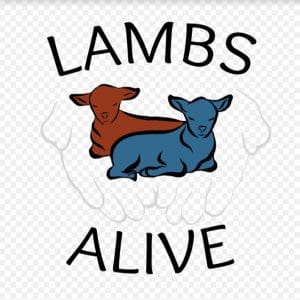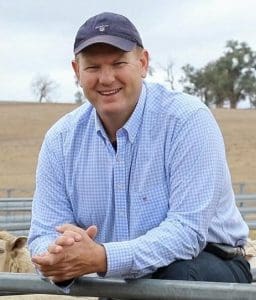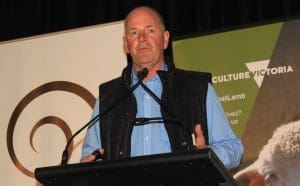 LAMBS ALIVE bootcampers tonight move into the next stage of their journey into assessing the risks and opportunities of the current farm, sheep and lamb market environment as the COVID-19 pandemic continues.
LAMBS ALIVE bootcampers tonight move into the next stage of their journey into assessing the risks and opportunities of the current farm, sheep and lamb market environment as the COVID-19 pandemic continues.
Producers who have not already joined the bootcamp should first join the LA Facebook Group by clicking on this link.
This is where producers get the chance to ask and answer questions, engage with the community and watch the LA live calls. See also the welcome video from LA founder Dr Jason Trompf by clicking here.
Register for the Lambs Alive bootcamp here.
The LA bootcamp is being delivered in three parts. Each part is delivered via a video delivered to your inbox and the following day there is a live call in the Facebook group to bring you more knowledge from experts and answer questions around the topic.
The Lambs Alive Bootcamp schedule
In part 1, producers heard about ‘Capitalising On Your Most Precious Asset’. The video for Part 1 featured Mecardo managing director Robert Herrmann, and is available HERE.

Dr Jason Trompf
Dr Trompf kicked off the interview by saying that farmers needed to keep operating during the COVID-19 pandemic, while minimising infection from visitors, family and staff.
Mr Herrmann told bootcampers before COVID-19 the drought had broken in many areas, restocker competition had kicked in, the African Swine Fever outbreak had dented world protein supply and the US-China trade deal was being negotiated.
“We just had this growing demand and this growing appetite for red meat in our major export markets and that was reflected in price.”
Mr Herrmann said lamb demand has been affected by the AFR outbreak in China, and mainly from top-end consumers with greater spending power with an increasing red meat appetite.
“The domestic consumer has been blown out of the water,” he said, by the AFR “petrol” inflaming demand that had been growing for some time.
Mr Herrmann said 30-35 percent of Australia’s lamb is consumed domestically and Australian consumers would face increasing competition from global customers.
He said on the supply side, Australia is at a delicate stage, with MLA’s June flock estimate at 60-63 million, although lamb exports have been increasing in recent years. Dr Trompf said the industry’s reproductive efficiency increased over the same period, mainly from a move to crossbreds from Merinos, and carcase weight increases.
“In recent times we’ve produced more and the price (lamb and mutton) has gone up,” Mr Herrmann said.
With the fast-moving COVID-19 pandemic in progress, Mr Herrmann said it is difficult to “ping” how it would affect sheep meat and wool markets.
But the “known unknowns” included the shortfall in global protein supply, the restocker appetite for lambs and the lower $A-$US exchange rate, Mr Hermann said.
“The only thing that has been holding people back from restocking has been the season.”
On the value of ewes today, Mr Hermann said producers impacted by the drought are going to have to be smart about they go forward, be strategic and very professional about it.
Those not impacted by the drought have the opportunity and some would say the responsibility to actually grow the industry, he said.

Robert Herrmann at the 2018 BestWool BestLamb Conference
Mr Herrmann said it was important to relate the value of ewes to their performance, their capacity. Dr Trompf said calculating the value of their ewes would be a key exercise for bootcampers.
Mr Herrmann said the recent spike in lamb supply has dropped prices by about 120c/kg in saleyards, has meant supplies in the future will tighter.
“The fact that the processors were able to absorb and process this just tells you they are not run off their feet and they still have orders to fill.”
Mr Herrmann said if there was a global recession that would impact on high-end product demand, including restaurants.
“If China does well out of this COVID-19, because they have an authoritarian government that can just mandate what happens, maybe they will come out of it quicker and maybe our reliance on our relationship will actually turn into a positive.”
A tough wool market, but premiums for non-mulesed

NCWSBA executive director Chris Wilcox with association centenary mascot Wooliam.
The next bonus live interview was with executive director of the National Council of Wool Selling Brokers of Australia Chris Wilcox, which you can watch HERE.
Mr Wilcox told bootcampers said the industry had been working collectively to ensure wool auctions keep going as an essential industry.
“That was under real threat.”
He said the market this week was another challenge with the 155 cent fall in the AWEX Eastern Market Indicator, pushing prices to mid-2016 levels.
“It has been a very very tough week … we had a very high passed-in rate, but wool is still being sold.”
Mr Wilcox said there are logistical issues associated with the COVID-19 pandemic, but Chinese mills are coming back to work, although there were issues with retail order levels from the Northern Hemisphere.
“People just can’t go out (to the retail stores) and buy.”
Processing in northern Italy is closed down and there were not many raw wool orders coming out of India, he said.
But he said wool can provide the types of “comfort” apparel that consumers will be looking for when they return to stores.
“For me as an economist, it’s hard to see how we are going to avoid a recession in most of the consumer markets around the world, despite the huge amounts of government expenditure.
“And here in Australia, it’s hard to see that we won’t have a recession,” he said.
Mr Wilcox said one of the big factors driving Merino wool prices from 2016-18 was active leisurewear, helping to off some of the losses in suiting.
“And it will be the thing that will come back, along with knitwear.”
The lower broad wool (32 micron-plus) prices have been low for 2.5 years due to a structural change in demand as synthetic fibres have taken over the interior textiles and carpet market.
“What we need to find for those brooder wool is as we’ve found for Merino wool, is a market that is untapped and will grow.
“That’s what we’ve got with the activewear market and they need something like that.”
However, Mr Wilcox said there has been growth for 25-30 micron wool in fake fur or plush womens’ outer coats, which Australian crossbred sheep producers were well-placed to supply, and this will come back again to a smaller extent.
Mr Wilcox said the current wool supply estimate for this year is about 272 million kilograms, compared to about 340mkgs two years ago, and 650mkgs in the early 2000s. Production drops have occurred in the other wool-producing countries, but globally the decline has not occurred in the broader wools, it has been in apparel wools such as Merino, he said.
“Supply being low has helped us, but somebody told me as few years ago that supply wins a battle but demand wins the war, and that’s what’s going to happen this time round.”
Mr Wilcox said there are clear auction premiums being paid for non-mulesed wool, up to 110-120 cents a kilogram, with higher premiums for specific types under contracts.
“But when I talk to mills in China but also in Italy, and the rest of Europe, they are absolutely adamant about the need for non-mulesed wool.
“They are so strong about that and that’s been fed back to them by the retailers, who in trun are responding to consumers,” he said.
“We are also seeing that from the industry in the US, Japan is less intense and when you talk to the mills in China, they say they get orders all the time for non-mulesed wool and also Responsible Wool Standard wool.”
Mr Wilcox said all the big Chinese mills have separate non-mulesed combing lines.
Part 2 of the Lambs Alive bootcamp starts tonight
Part 2 of the bootcamp starts today with a video release followed by a LIVE call on Sunday 5 April at 8.30pm. Dr Trompf said part 2 is about where the big opportunities in sheep lie in 2020.
“It is basically pinpointing what you can do to take the next step.
“As an industry we’ve doubled our gross value of production in the last 10 years from about 4 billion up to $8 billion, when we count both sheep and wool,” he said.
“We’ve done that in the face of a rapidly decline flock, which is now down to a 100-year low, so it is kind of good news, but not so good news.
“But I presents an opportunity for you and that’s the purpose of this discussion.
“The industry might be in one situation, but what can you make of that for the betterment of your family, your farm and your future.”
Dr Trompf said as the flock has reduced and the industry’s gross value of production has increased, the value of a sheep has gone up six-fold in a relatively short period of time.
He said the ewe that once was worth $20-$30 today is worth 10 times that. In bootcamp exercises, producers have valued their flocks to help them focus on converting that asset into performance.
Dr Trompf said the GVP of the industry has been driven by an improvement in carcase weights in lambs and mutton, and a 10 percent increase in lamb marking rates in the last 10 years through flock restructure, better seasons (until recently) and improved management.
“So we’ve been making progress, but there is a lot more opportunity yet.”



HAVE YOUR SAY